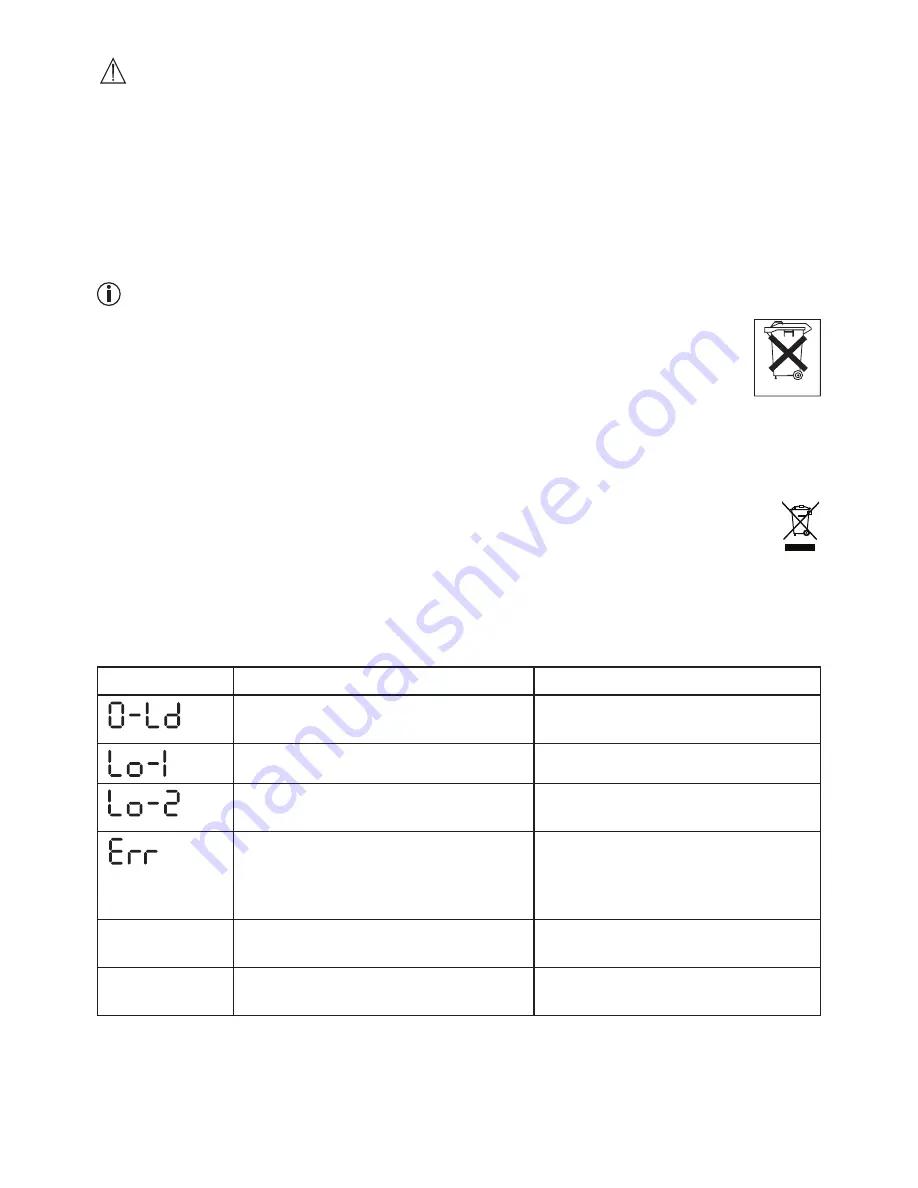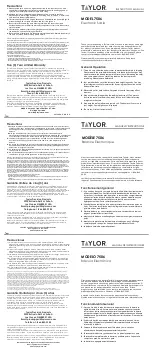
15
Important
• Do not use aggressive solvents or cleaning agents!
• Never immerse the unit in water!
• Do not wash the unit in a dishwasher!
11. Disposal
Standard and rechargeable batteries should not be disposed of separately from the household waste.
As a consumer, you are legally obliged to return used batteries for proper disposal. You can hand in your
used batteries at public collection points in your district or sales outlets where batteries of this type are
sold.
Note:
The codes below are printed on batteries containing harmful substances:
Pb = Battery contains lead,
Cd = Battery contains cadmium,
Hg = Battery contains mercury.
For environmental reasons, do not dispose of the scale with the batteries in the household waste at
the end of its useful life. Dispose of the unit at a suitable local collection or recycling point.
Observe the local regulations for material disposal.
Dispose of the unit in accordance with EC Directive
2002/96/ec – Weee
(Waste Electrical and
Electronic Equipment).
If you have any questions, please contact the local authorities responsible for waste disposal.
12. What if there are problems?
If the scale detects and error when measuring, the following is displayed.
Display
cause
Remedy
The maximum load-bearing capacity of
150 kg was exceeded.
The load must not exceed 150 kg.
The scale batteries are almost flat.
Replace the batteries of scale.
The control panel batteries are almost
flat.
Replace the batteries of control panel.
Faulty or no transmission between scale
platform and control panel.
Place the scale on a flat surface and
activate it correctly (wait for the display
to show „0.0“) and repeat the measure-
ment (see page 14).
No display
The batteries in the control panel are enti-
rely flat.
Replace the batteries (see page 13).
The batteries in the control panel are not
correctly installed.
Check that the polarity is correct (see
page 12).
Pb Cd Hg
















































